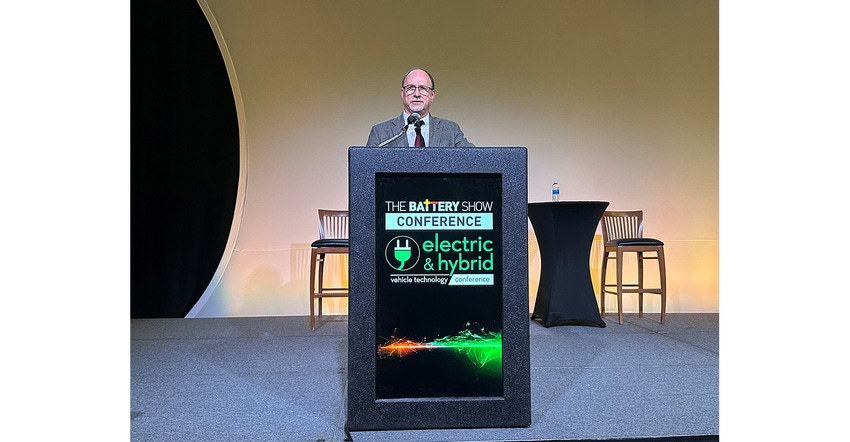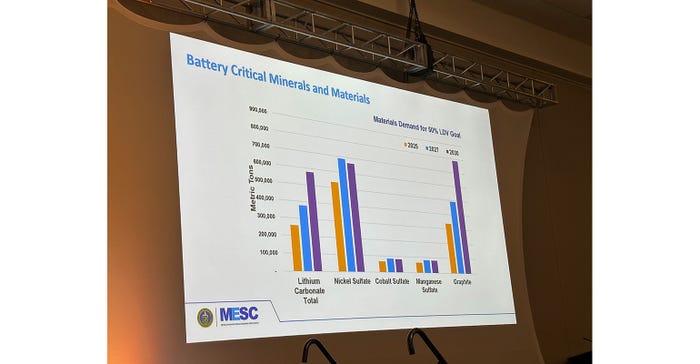9 Insights from the DOE's Office of Manufacturing and Energy Supply Chains
Discover nine vital insights from the Department of Energy’s battery innovation and manufacturing efforts, driving the future of sustainable energy and electric vehicles.

The Department of Energy (DOE) has driven innovation, manufacturing excellence, and supply chain resilience within battery technologies. During a presentation at the Battery Show North America, David Howell, Principal Deputy Director of the Department of Energy’s Office of Manufacturing and Energy Supply Chains, delved into the critical activities the DOE undertook to support and advance battery innovation, bolster domestic manufacturing capabilities, and ensure a robust supply chain.
These efforts are instrumental in accelerating the adoption of electric vehicles (EVs) and reinforcing the US’s position as a leader in the ever-evolving world of energy storage and sustainability. Join us as we explore the initiatives and strategies shaping the future of battery technology in the US. Here are the significant highlights of Howell’s presentation:
1. EV sales growth: Howell highlighted the significant increase in EV sales in the United States. In 2022, there were over 900,000 EV sales, and by June of the current year, it was expected to exceed 1.3M, moving closer to the President’s goal of leading the EV market by 2030.
2. Private sector investment: The industry is witnessing substantial investments, with over $100B allocated to battery cell manufacturing capacity, totaling 760 Gigawatts-hours. This investment aims to bolster domestic capabilities and support the transition to EVs.
3. Supply chain gaps: While there is progress in battery manufacturing, Howell also emphasized the gaps in component manufacturing, materials, and recycling. Components like lithium carbonate, nickel sulfate, cobalt sulfate, cathode active materials, and electrolyte salts still require significant development to meet the growing demand.
4. Tax credits and incentives: Dave Howell discussed the government’s efforts to incentivize EV and battery manufacturing through tax credits and grants. These programs aim to provide financial support to manufacturers transitioning to electric vehicle production.
5. Critical minerals: The DOE is also working on securing domestic sources of critical minerals required for battery production, including initiatives to develop refining and processing capabilities for materials like lithium, cobalt, and graphite.

6. Federal consortium for batteries: Howell highlighted the Federal Consortium for Advanced Batteries (FCAB), which involves 19 federal agencies and over 80 offices. This consortium supports the battery manufacturing ecosystem and collaborates on various aspects, including policies, minerals, innovation, and workforce development.
7. Recycling programs: The DOE is actively involved in battery recycling programs, including efforts to establish an ecosystem for recycling spent batteries, recovering valuable materials, and supporting second-use applications.
8. DOE battery group strategy: The DOE Battery Group Strategy Team is advancing battery technologies across various fronts, from fundamental research to manufacturing and supply chain readiness. They aim to identify and support game-changing technologies.
9. Technology readiness levels: The DOE assesses technology, manufacturing, and commercialization readiness levels to determine how to support technologies that can significantly impact the market.
Howell’s presentation highlighted the government’s commitment to promoting EVs and battery technologies while addressing critical supply chain development and sustainability challenges. The DOE strongly focuses on EV adoption, critical mineral sourcing, and recycling. As we navigate the transition from conventional combustion engines to EVs, and the integration of batteries into our grid systems, the DOE’s commitment to fostering innovation and resilience in the energy sector promises a greener and more sustainable future for the US.
About the Author(s)
You May Also Like





